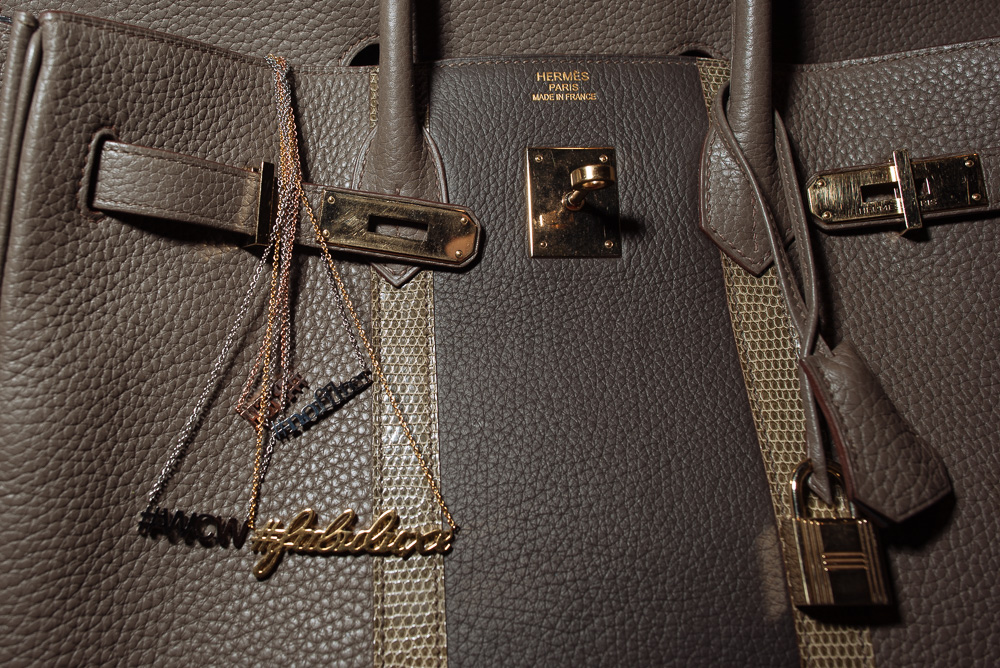
Waiting list or not, it can still be super tricky to get the Hermès Birkin of your dreams. If you walk into an Hermès store, anyone can buy anything off the shelf, but you will rarely find a Birkin or a Kelly waiting for you. Those bags, if available, are usually kept out of sight and require speaking to a salesperson.
Sales associates work closely with customers to help them find what they’re looking for. Though a traditional wait list doesn’t exist, there is an order of who gets what and when, and sometimes it’s hard to figure out if it will ever be your turn. That’s why countless shoppers turn to the resale market to find the Birkin that they want in a timely manner.
The resale market is flooded with bags, and, unfortunately, many are fake. In our new series, we will share tips on making sure the bag you find is real. There is so much more that goes into Hèrmes authenticating than just what we’ve compiled below, and in the next post, I’ll share more specifics on the bag to look out for. To kick it off, though, here are five basics tips to tell if a Hermès Birkin is real or fake.

1. Pay Attention to Price
If it’s too good to be true, it usually is. No one is going to give away a bag that can be easily resold for $12,000 for a lot less just because they claim to have gotten it as a gift. It’s especially true for a Birkin, but the tip can be applied to many sought-after designer bags. Don’t expect to get a Birkin that is in good condition for much under retail value, if at all. However, also keep in mind that seasoned scammers will often price a bag in the right range because they feel it helps build the illusion that the bag is the real thing.

2. Know Your Seller and Ask Questions
While buying on Instagram or Facebook can be tempting, often there are very few photos. Ask to see photos of the interior, with a clear view of both lining and zipper ends; on a Birkin, those have distinguishing features. Make sure photos are clear enough that you can look at the stitching carefully. Also ask to see the craftsman’s marks, as Hermès is relatively consistent in how it uses them; often, fakes are 28S on the craftsman stamp or 121 on the lock set (though 121 was used as an authentic lock set a long time ago).
If the seller has a good reputation for selling authentic goods, you know that if anything does go wrong with the transaction as a whole, you are dealing with a reputable business person. It’s best to deal with people who have built a considerable reputation and business on the sale of authentic goods, even if that means paying a bit more versus a new or amateur seller. Also, remember that wire transfer is advantageous to the seller but not to the buyer. Once a wire is sent, the buyer has no protection at all should something go wrong. See if the seller’s written policies stand behind authenticity and how they handle the return of a bag that a buyer believes to be fake. We have a great post on buying pre-owned designer bags online that gives a list of sites we like to use.

3. Do Your Research
The Birkin has so many options, so do your research ahead of time on authentic bags in the color and leather you want, as they will have a specific combination of stitch and resin color. For example, a gold Birkin will have white contrast stitching and brown resin. If it’s identified as gold but doesn’t have contrast stitching, it may still be authentic and the seller has misidentified the leather color. That should still be a red flag–not only is it more likely the bag is fake than if everything matched up as it was supposed to, but it means the seller may not be as detail-oriented as you’d ideally prefer for a five-figure transaction.
You can peruse countless threads that include images and information in the Hèrmes subforum on PurseForum.

4. Don’t Believe the Store Will Authenticate
If a seller insists on meeting in an Hermès store so that the bag can be authenticated there, don’t fall for it. Hermès, like most high end designers, does not allow its sales people to authenticate an item. The seller is likely using this offer as a way to reassure you the bag is real and hoping you will not call his or her bluff and insist on the meet-up.

5. Get the Bag Authenticated Before You Purchase
If you don’t feel qualified to authenticate on your own (and even experienced buyers can be fooled by a good fake), consider using a trusted authentication service. The PurseForum has amazing authenticators that volunteer their time in the Authenticate This Hèrmes Thread.
Also, sometimes you will want to enlist the services of a paid authenticator. Generally for Hermès, the price is in the range of $50 to $100, depending on the item and verification provided. Considering the amount of money potentially on the line, it’s worth investing that little bit more for peace of mind. If you receive an authentication telling you a bag is fake, you can provide that to the seller to help get your money back, and some resale services require it in order to issue a refund.